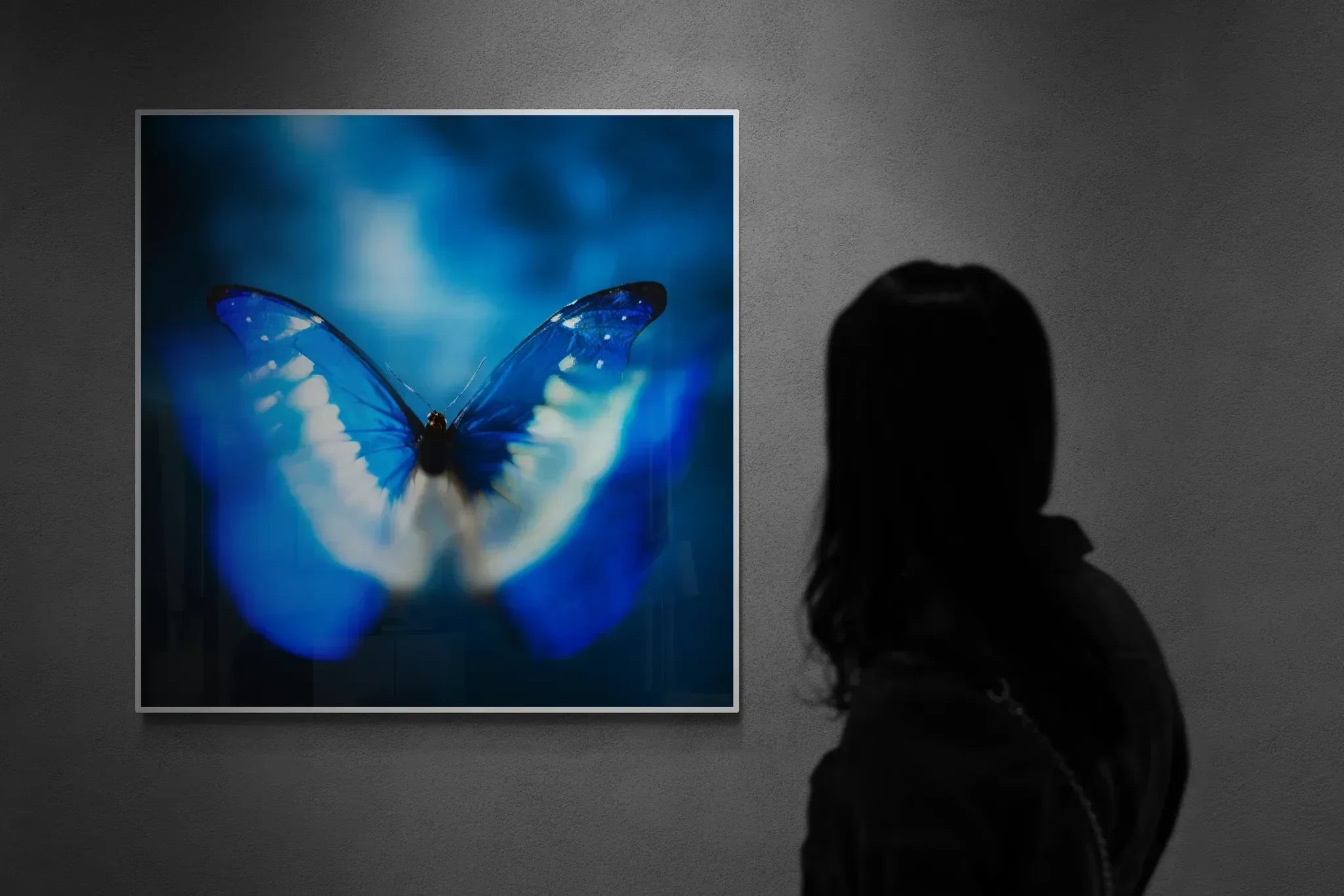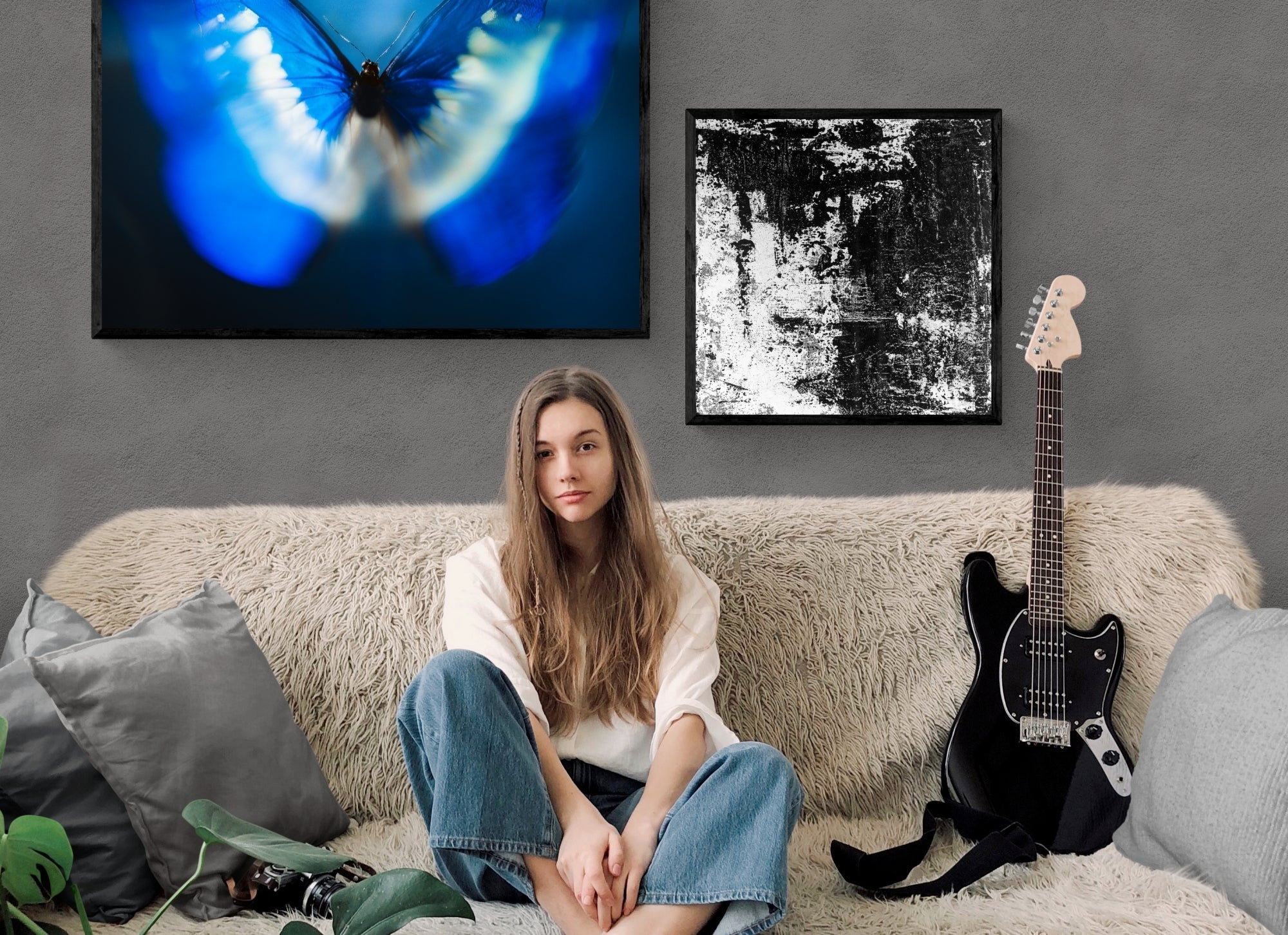Key Takeaways
Key Takeaways
- Joe Papagoda uses visual language in his photography through shapes, lines, colors, light, and space to share emotions without words.
- His techniques include high contrast, off-center framing, and selective Depth of Field to add depth and guide viewer focus.
- Photos like a butterfly in a hand capture themes of life and freedom, evoking personal feelings of peace or nostalgia.
- Joe's Photography is separate from his paintings - they are not mixed together
- For his visual art, he uses a variety of photography equipment, from high end Nikon DSLR's and mirrorless cameras, medium format Hasselblad cameras, to even lo-fi instant film and 35mm.
- To appreciate his art, observe details in light and composition, reflect on your emotions and creative thoughts and inspiration, and consider how it fits in your spaces.
Joe Papagoda has an intriguing knack for capturing the simplicity and complexity of life through his fine art photography. With a signature style that composes artistic techniques into his captured scenes, his work connects with viewers on a deeply personal level. Every piece reflects an experience, a suggestion of a calm or quiet mood, or an inspirational emotion. His photos are more than just snapshots. They tell stories.
To fully experience Joe’s art, it helps to understand a concept known as visual language. This refers to how an artist communicates using shapes, lines, colors, light, and space. When you learn how these elements work together, the meaning behind the image becomes clearer and its emotional impact even stronger. That context brings you closer to the artist’s message.
Understanding the Visual Language in Art
Visual language is how artists speak without words. They use shapes, colors, textures, and light to guide how we interpret their work. In Joe Papagoda’s photography, this language comes alive by combining color, contrast, and composition to introduce meaning and emotion to every frame.
Think about how a bold red in an image might create a feeling of urgency or warmth, while soft blues might spark reflection or calm. Every photo contains clues. A broken shadow across a street, a tilted horizon, or a sharp edge cutting through soft light—these details all say something. They invite the viewer to lean in and ask, “What is this piece trying to make me feel?”
In photography, where each image freezes a moment in time, every part of the visual layout matters. When you’re aware of that visual language, it’s easier to notice subtle messages hiding in the light and structure. Viewers who take the time to learn this language find themselves engaging with the photograph instead of just looking at it.
Exploring Joe Papagoda's Techniques
Joe Papagoda doesn’t just take photographs. He creates with intention. His work often stands out because of how he plays with framing, form, and light. Whether it’s high contrast between shadows and saturated color, or an off-center composition that immediately draws your eye, every decision he makes shapes how the viewer perceives the image.
He often uses angles that make familiar places look unfamiliar. This has the effect of slowing us down. Suddenly a butterfly, a cloud, or a shadow holds more meaning than it would at first glance. Joe also uses different light sources—natural or artificial—to create dramatic highlights or isolate distinct parts of the scene. This makes the viewer focus exactly where he wants them to.
Another one of Joe’s signature techniques is the use of partial blur or selective sharpness. It can suggest movement, memory, or change. By shifting which part of the image is in focus, he creates tension and depth, encouraging the viewer to pause and consider why that specific detail was chosen. This visual strategy also echoes the blurring edges and vibrant, colliding colors found in his abstract paintings - where form and color meet in the middle, often unpredictably. These methods all contribute to a personal and visual signature that defines Joe’s photography and connects it back to his broader artistic vision.
Interpreting Emotion through Joe Papagoda's Photography
Emotion plays a big role in the impact of Joe Papagoda’s photography. He finds ways to make people feel something just by observing light on a wall or the curve of a deserted trail. His photos are quiet in their approach but powerful in effect.
One photo might contain a dimly lit sky before night with only a small purple-pink hued cloud floating in a vast sky highlighted by the light from the setting sun off camera. That might resonate as solitude or nostalgia depending on who’s viewing. Another shot might show color multiplying around the edges of a rose or butterfly. There's peace in that kind of moment. Joe captures not only how things look - but how they feel.
He uses simple elements to show deep feelings. Take, for example, an image of a single butterfly resting in the palm of the hand. There's a story there: life, resilience, freedom. The background might be blurry or minimal, the framing tight, drawing the eye directly to the central subject. Joe often allows emotions to guide his choices, and the result is artwork that hits home without a single word spoken.
How to Appreciate and Collect Joe Papagoda's Art
Engaging with Joe Papagoda’s photography is about slowing down and noticing the details. These aren’t images to rush past. They’re made for reflection. Here are a few ways to dive deeper into appreciating and possibly collecting his work:
1. Observe closely. Don’t just glance at the image. Look at where the light falls, the balance in composition, and what draws your eye first.
2. Reflect on your own feelings. Ask yourself what emotions the piece triggers. Is it tension? Calm? Something nostalgic? These reactions are part of the art experience.
3. Study his methods. Once you start recognizing how Joe uses light, focus, and angle, you’re able to appreciate the layers he builds into every photo.
4. Consider the theme. Each photo taps into a theme—whether it’s solitude, motion, or form—that ties back to shared human moments and thoughts.
5. Think about placement. If collecting, choose where to place the artwork so it gets the attention it deserves. A quiet space helps bring out the emotion in the composition.
These works of art aren’t just visual backdrops. They are meant to hold presence in a room, become part of a storytelling environment, or trigger conversation. For collectors, they offer the chance to live with a piece that continues to grow on you over time.
Discover Joe Papagoda's World
Joe Papagoda’s fine art photography offers something rare.. a mix of technical skill and emotional resonance that invites us to be still and see differently. His use of light, space, and perspective encourages viewers to look beyond the obvious and connect to something more thoughtful.
He gives us moments that feel familiar, yet mysterious. A quiet tone runs through his body of work. It’s not loud or flashy, but it speaks directly to the part of us that longs to understand how moments feel. That’s what makes Joe’s style stand out—it doesn’t ask for attention, it earns reflection.
If you're drawn to art that combines visual language with emotional story, Joe Papagoda’s photography offers a path worth exploring. Every image has something to say if you're willing to pause and listen.
If you’re looking to bring more depth and emotion into your collection, take a moment to explore abstract art by Joe Papagoda. These works offer a powerful way to transform a space while encouraging daily moments of reflection. At ArtFinest, each piece is thoughtfully created to speak to the personal stories that make your space truly yours.
FAQ
What makes Joe Papagoda's photography stand out? His work mixes solitude or calm through light, color, and perspective angles. Use of upclose wide angles or far off photos captured through high end telephoto Nikkor lenses.
What photography gear does Joe Papagoda use? He works across formats to match the mood of each piece. He uses high-end Nikon DSLRs and mirrorless cameras for precision and dynamic range, natural light and also portable studio lights, medium format Hasselblad systems for rich detail and tonal depth, and even lo-fi instant film and 35mm for texture, grit, and nostalgic character.
How does visual language work in his photos? Artists like Joe use shapes, colors, and light to communicate ideas; for example, bold reds suggest warmth, while soft blues bring calm.
Why should I collect his art? It adds emotional depth to your home or office, sparking reflection and conversation with pieces that grow on you over time.
How can I start appreciating his techniques? Look closely at light placement and focus in each image, then note what feelings it stirs in you.
Where can I find more of Joe Papagoda's work? Check the fine art photography collection at ArtFinest or explore his abstract paintings for similar emotional styles expressed through paint and mixed media.



